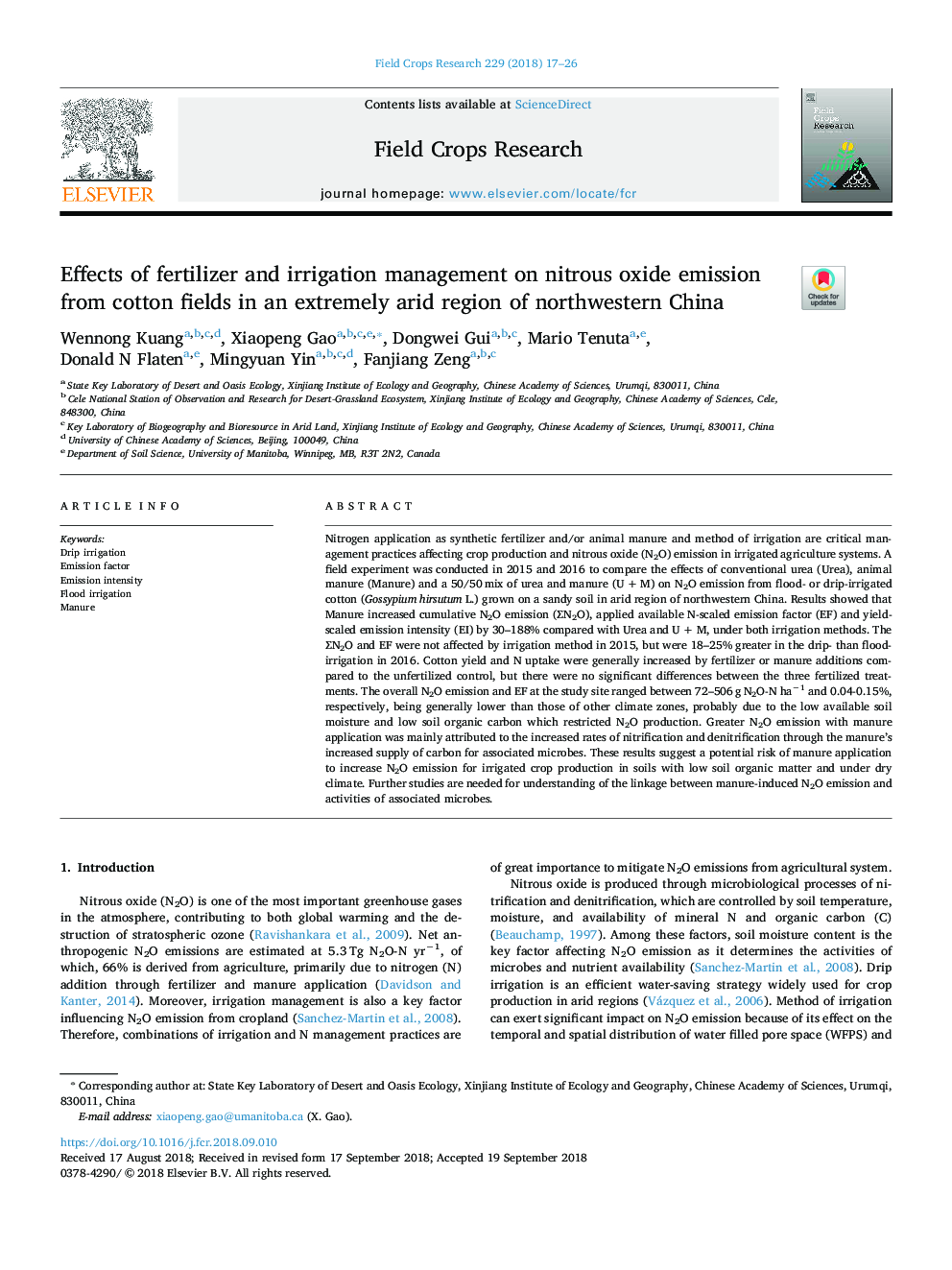| کد مقاله | کد نشریه | سال انتشار | مقاله انگلیسی | نسخه تمام متن |
|---|---|---|---|---|
| 11024952 | 1701051 | 2018 | 10 صفحه PDF | دانلود رایگان |
عنوان انگلیسی مقاله ISI
Effects of fertilizer and irrigation management on nitrous oxide emission from cotton fields in an extremely arid region of northwestern China
ترجمه فارسی عنوان
تأثیر مدیریت کود و مدیریت آبیاری بر انتشار اکسید نیتروژن از مزارع پنبه در یک منطقه بسیار خشک در شمال غربی چین
دانلود مقاله + سفارش ترجمه
دانلود مقاله ISI انگلیسی
رایگان برای ایرانیان
کلمات کلیدی
آبیاری قطره ای فاکتور انتشار، شدت انتشار، آبیاری سیل، کود کشاورزی،
موضوعات مرتبط
علوم زیستی و بیوفناوری
علوم کشاورزی و بیولوژیک
علوم زراعت و اصلاح نباتات
چکیده انگلیسی
Nitrogen application as synthetic fertilizer and/or animal manure and method of irrigation are critical management practices affecting crop production and nitrous oxide (N2O) emission in irrigated agriculture systems. A field experiment was conducted in 2015 and 2016 to compare the effects of conventional urea (Urea), animal manure (Manure) and a 50/50âmix of urea and manure (Uâ+âM) on N2O emission from flood- or drip-irrigated cotton (Gossypium hirsutum L.) grown on a sandy soil in arid region of northwestern China. Results showed that Manure increased cumulative N2O emission (Æ©N2O), applied available N-scaled emission factor (EF) and yield-scaled emission intensity (EI) by 30-188% compared with Urea and Uâ+âM, under both irrigation methods. The Æ©N2O and EF were not affected by irrigation method in 2015, but were 18-25% greater in the drip- than flood- irrigation in 2016. Cotton yield and N uptake were generally increased by fertilizer or manure additions compared to the unfertilized control, but there were no significant differences between the three fertilized treatments. The overall N2O emission and EF at the study site ranged between 72-506âgâN2O-N haâ1 and 0.04-0.15%, respectively, being generally lower than those of other climate zones, probably due to the low available soil moisture and low soil organic carbon which restricted N2O production. Greater N2O emission with manure application was mainly attributed to the increased rates of nitrification and denitrification through the manure's increased supply of carbon for associated microbes. These results suggest a potential risk of manure application to increase N2O emission for irrigated crop production in soils with low soil organic matter and under dry climate. Further studies are needed for understanding of the linkage between manure-induced N2O emission and activities of associated microbes.
ناشر
Database: Elsevier - ScienceDirect (ساینس دایرکت)
Journal: Field Crops Research - Volume 229, 1 December 2018, Pages 17-26
Journal: Field Crops Research - Volume 229, 1 December 2018, Pages 17-26
نویسندگان
Wennong Kuang, Xiaopeng Gao, Dongwei Gui, Mario Tenuta, Donald N Flaten, Mingyuan Yin, Fanjiang Zeng,
